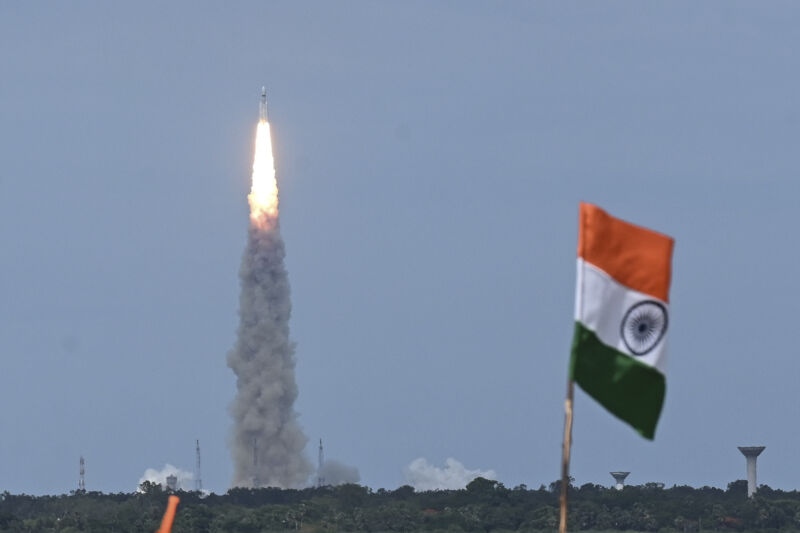
Enlarge / An LVM-3 rocket carrying the Chandrayaan-3 spacecraft lifts off from the Satish Dhawan Space Centre in Sriharikota on Friday. (credit: R.Satish BABU / AFP)
India took the first step toward its second attempt to land on the Moon on Friday with the launch of its Chandrayaan-3 mission from the Satish Dhawan Space Centre in the southeastern part of the country.
The spacecraft launched on the LVM-3 rocket, the heaviest lift vehicle in India's fleet. Liftoff came nearly three years to the date of the launch of the Chandrayaan-2 mission to the Moon. That launch successfully placed a spacecraft into lunar orbit, but a landing attempt was unsuccessful. The Indian space agency, ISRO, lost communication with its Vikram lander at about 2 kilometers above the lunar surface due to a software problem. It subsequently crashed into the Moon.
So the Indian space agency decided to learn from its mistakes and try again. The Chandrayaan-3 mission has eschewed the lunar orbiter, as the Indian spacecraft remains operational after three years. So this launch consisted of a propulsion module, a new Vikram lander, and a small rover named Pragyan.
No comments:
Post a Comment